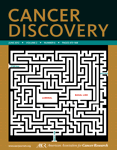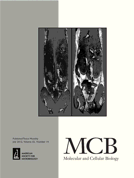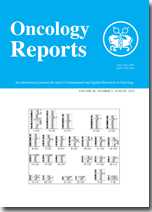J Natl Cancer Inst:催孕药物与乳腺癌发生风险
2012-07-10 刘芊 爱唯医学网
《国立癌症研究所杂志》(J Natl Cancer Inst)7月6日在线发表的一项研究显示,催孕药物对早发性乳腺癌(诊断时年龄低于50岁)风险的影响因药、因人而异。 美国国立环境健康科学研究所的Chunyuan Fei博士及其同事采用了来自“两姊妹研究”的数据。这是一项病例对照研究,所招募的姊妹中
美国国立环境健康科学研究所的Chunyuan Fei博士及其同事采用了来自“两姊妹研究”的数据。这是一项病例对照研究,所招募的姊妹中,均为一人在50岁之前被诊断为乳腺癌而另一人没有。在1,422例乳腺癌患者及其非乳腺癌姊妹中,288人报告称正在使用催孕药物——柠檬酸克罗米酚和(或)卵泡刺激素。
结果显示,使用催孕药物者的乳腺癌风险低于未使用者,但差异不显著(OR,0.82;95%CI,0.63~1.08)。但这一风险降低可能仅与克罗米酚有关——一种类似他莫西芬的选择性雌激素受体调节剂,本研究中单独使用卵泡刺激素的患者很少。
如果使用了催孕药物但未能获得≥10周妊娠,则使用这类药物与早发性乳腺癌风险降低相关,与未使用者相比的比值比(OR)为0.62[95%置信区间(CI),0.43~0.89]。而对于使用了促排卵性催孕药物且妊娠≥10周的女性,乳腺癌风险显著高于治疗不成功者(OR,1.82; 95% CI, 1.10 to 3.00)。
研究者认为,经过催孕药物治疗而获得≥10妊娠者的乳腺癌风险显著升高,“可能是催孕药物诱导排卵和提高雌激素水平的结果,因为诱导排卵可导致孕早期对卵巢激素的异常高暴露,从而影响此后的乳腺重构”。Fei博士表示:“我们的数据提示,催孕药物促成的妊娠足以抵消与排卵刺激药物暴露相关的乳腺癌风险降低效应。”
但美国国立癌症研究所的Louise A. Brinton博士在随刊述评中指出,可能还有另一种解释:成功受孕的女性可能此前已暴露于高水平的药物,后者使得早发性乳腺癌风险升高。她还强调,早发性乳腺癌具有一些独特的预测因素,包括与遗传因素联系更紧密。很可能还有其他因素参与其中,“不可能断定是否存在独立的遗传-环境相互作用”。诸如上述研究这样的病例对照研究可以提出假设,而催孕药物对乳腺癌风险的确切影响则需要在大规模队列研究中才能证实。
Brinton博士表示:“对该研究和既往研究结果进行解读并不容易,分别有数据支持这类药物降低风险、增加风险或不影响风险。可以认为二者的关系相当复杂,因此解读研究结果时必须更加谨慎。催孕药物具有可观的益处,它们会大大增加女性受孕的几率,从而明显降低远期乳腺癌风险。众所周知,妊娠对乳腺癌风险的影响具有双向性,即风险在短期内增加,但升高效应随着时间流逝而减弱,最终变为降低。”
这项研究由国立环境研究所和Susan G. Komen for the Cure资助。
摘要:
Background:Fertility drugs stimulate hyperovulation, which may have implications for breast cancer. We examined the association between use of fertility drugs (clomiphene citrate [CC] and follicle-stimulating hormone [FSH]) and subsequent risk of young-onset (<50 years at diagnosis) breast cancer.
Methods:We conducted the Two Sister Study, a sister-matched case–control study, by enrolling 1422 women between September 2008 and December 2010, who were younger than age 50 years at diagnosis with breast cancer and were enrolled within 4 years of diagnosis, and 1669 breast cancer–free control sisters from the Sister Study. Participants reported their use of fertility drugs (CC and FSH) and ever-users reported whether a pregnancy had resulted that lasted 10 or more (10+) weeks. Conditional logistic regression was used to estimate confounder-adjusted odds ratios (ORs) and 95% confidence intervals (CIs) for fertility drug use with or without conception of a 10+ week pregnancy.
Results:A total of 288 participants reported having used ovulation-stimulating drugs (193 CC only, 29 FSH only, and 66 both). Overall, women who had used fertility drugs showed a non-statistically significantly decreased risk of breast cancer, compared with nonusers (OR = 0.82, 95% CI = 0.63 to 1.08). Women who had used fertility drugs but had not conceived a 10+ week pregnancy under treatment showed a statistically significantly decreased risk of breast cancer compared with nonusers (OR = 0.62, 95% CI = 0.43 to 0.89). Women who had used fertility drugs and conceived a 10+ week pregnancy under treatment showed a statistically significantly increased risk of breast cancer compared with unsuccessfully treated women (OR = 1.82, 95% CI = 1.10 to 3.00), although their risk was not increased compared with women who had not used fertility drugs (OR = 1.13, 95% CI = 0.78 to 1.64).
Conclusions:In the absence of a 10+ week pregnancy under treatment, exposure to ovulation-stimulating fertility drugs was associated with reduced risk of young-onset breast cancer. This apparent association was absent in women who conceived a 10+ week pregnancy under treatment, for whom risk was higher than that of unsuccessfully treated women, but similar to that of untreated women.
本网站所有内容来源注明为“梅斯医学”或“MedSci原创”的文字、图片和音视频资料,版权均属于梅斯医学所有。非经授权,任何媒体、网站或个人不得转载,授权转载时须注明来源为“梅斯医学”。其它来源的文章系转载文章,或“梅斯号”自媒体发布的文章,仅系出于传递更多信息之目的,本站仅负责审核内容合规,其内容不代表本站立场,本站不负责内容的准确性和版权。如果存在侵权、或不希望被转载的媒体或个人可与我们联系,我们将立即进行删除处理。
在此留言













#ATL#
47
#NST#
48
#Nat#
85